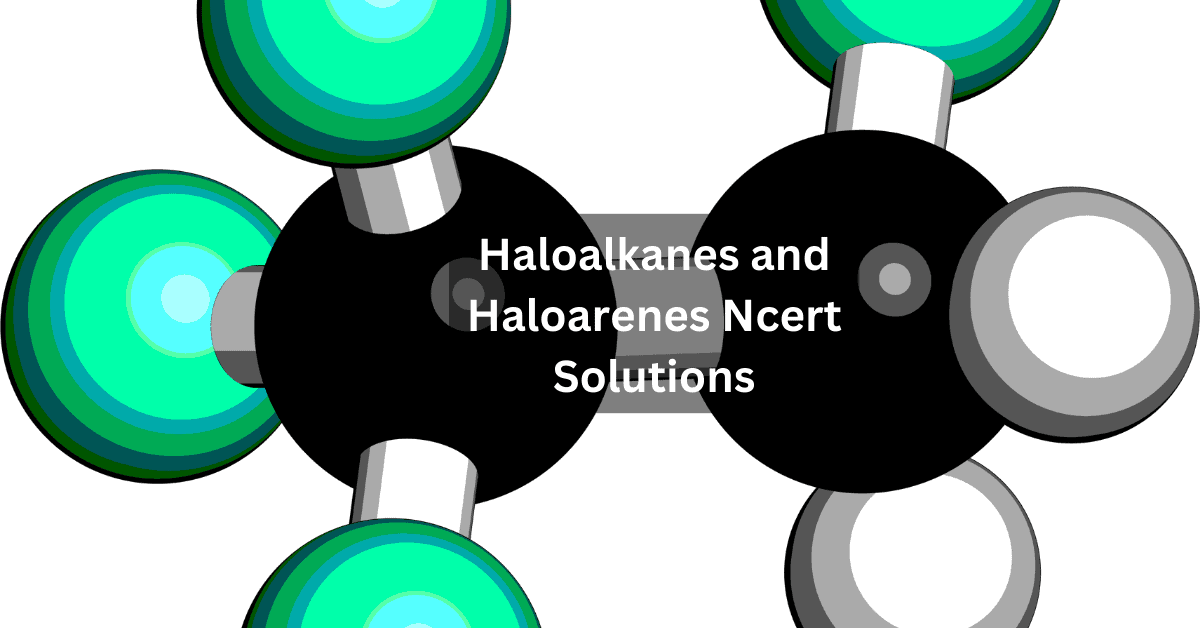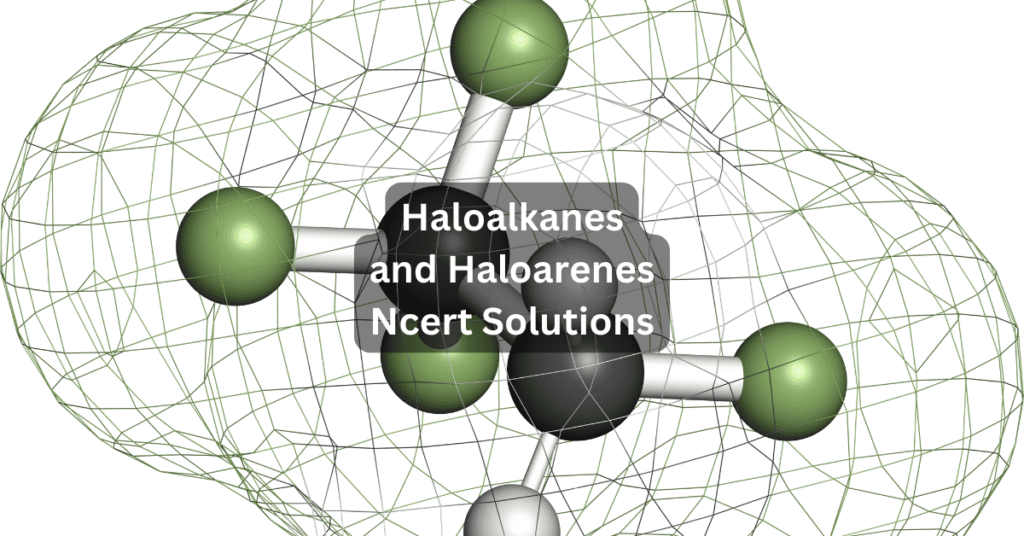

Haloalkanes and Haloarenes NCERT Solutions for Class 12 Chemistry
Understanding Haloalkanes and Haloarenes: NCERT Solutions for Class 12 Chemistry
Haloalkanes and haloarenes are crucial topics in Class 12 Chemistry, offering a deep dive into organic compounds containing halogens. These compounds form the basis for understanding several chemical reactions and mechanisms that are vital for advanced studies in chemistry. In this blog post, we will explore the concepts, reactions, and solutions related to haloalkanes and haloarenes as per the NCERT syllabus, providing a comprehensive guide for students.


Introduction to Haloalkanes and Haloarenes
Haloalkanes (alkyl halides) and haloarenes (aryl halides) are organic compounds where halogen atoms (fluorine, chlorine, bromine, or iodine) replace one or more hydrogen atoms in hydrocarbons. These compounds exhibit diverse physical and chemical properties, making them significant in both industrial applications and academic research.
Haloalkanes: These are aliphatic compounds containing halogen atoms attached to sp3 hybridized carbon atoms. They can be classified into primary, secondary, and tertiary haloalkanes based on the carbon to which the halogen is attached.
Haloarenes: These are aromatic compounds where halogen atoms are directly attached to the sp2 hybridized carbon atoms of the benzene ring. Chlorobenzene is a common example of a haloarene.
Physical Properties of Haloalkanes and Haloarenes
The physical properties of haloalkanes and haloarenes vary significantly with the type and number of halogen atoms present.
- Boiling and Melting Points: Generally, haloalkanes and haloarenes have higher boiling and melting points than their corresponding hydrocarbons due to increased molecular weight and stronger intermolecular forces (van der Waals forces).
- Density: Haloalkanes and haloarenes are denser than water, with density increasing with the number and atomic mass of halogen atoms.
- Solubility: While haloalkanes are slightly soluble in water, haloarenes are virtually insoluble due to their non-polar nature. Both are soluble in organic solvents like ethanol, ether, and benzene.
Chemical Reactions of Haloalkanes
Nucleophilic Substitution Reactions (SN1 and SN2):
- SN1 Reaction: A two-step mechanism involving the formation of a carbocation intermediate. It is favored in tertiary haloalkanes.
- SN2 Reaction: A single-step mechanism where the nucleophile attacks the carbon atom bearing the leaving group, resulting in inversion of configuration. It is common in primary haloalkanes.
Elimination Reactions (E1 and E2):
- E1 Reaction: A two-step process where the halide leaves first, forming a carbocation, followed by the elimination of a proton.
- E2 Reaction: A one-step process where the base removes a proton as the halide leaves simultaneously, leading to the formation of an alkene.
Reduction Reactions:
Haloalkanes can be reduced to alkanes by treating with reducing agents like zinc in acidic medium.
Chemical Reactions of Haloarenes
Nucleophilic Aromatic Substitution:
Haloarenes undergo substitution reactions where the halogen atom is replaced by a nucleophile. This occurs through either an addition-elimination mechanism or a benzyne intermediate.
Electrophilic Substitution Reactions:
Haloarenes participate in electrophilic substitution reactions, where the halogen atom, being electron-withdrawing, deactivates the benzene ring towards electrophilic attack. Common reactions include nitration, sulfonation, and Friedel-Crafts alkylation/acylation.
Reduction Reactions:
Haloarenes can be reduced to aromatic hydrocarbons using metals like nickel or palladium in the presence of hydrogen.
Haloalkanes and Haloarenes NCERT Solutions pdf download
Click here to download pdf


NCERT Solutions for Haloalkanes and Haloarenes


Example Problems and Solutions:
Write the mechanism of the SN2 reaction of bromoethane with hydroxide ion.
Solution:
The hydroxide ion attacks the carbon atom bonded to the bromine atom from the opposite side, leading to the simultaneous displacement of the bromine atom. The reaction proceeds through a single transition state with inversion of configuration.
Explain why haloarenes are less reactive towards nucleophilic substitution reactions compared to haloalkanes.
Solution:
Haloarenes are less reactive due to the resonance stabilization of the benzene ring, the partial double bond character of the C-X bond, and the inductive electron-withdrawing effect of the sp2 hybridized carbon atom.
Describe the E2 elimination mechanism of 2-bromopropane with ethoxide ion.
Solution:
The ethoxide ion abstracts a proton from the carbon adjacent to the carbon bearing the bromine atom. Simultaneously, the bromine atom leaves, forming propene in a single concerted step.
Outline the steps involved in the electrophilic substitution reaction of chlorobenzene with nitric acid to form nitrochlorobenzene.
Solution:
Generation of the electrophile (NO2+) by the reaction of nitric acid and sulfuric acid.
The NO2+ ion attacks the benzene ring, forming a sigma complex.
Deprotonation restores the aromaticity, yielding nitrochlorobenzene.
Predict the product of the reaction of bromobenzene with potassium amide in liquid ammonia.
Solution:
The reaction proceeds through a benzyne intermediate, resulting in the formation of aniline (aminobenzene).
Frequently Asked Questions (FAQs)
What is the difference between SN1 and SN2 reactions?
SN1 reactions are unimolecular nucleophilic substitution reactions involving two steps: the formation of a carbocation intermediate and nucleophilic attack. They are favored by tertiary haloalkanes. SN2 reactions are bimolecular nucleophilic substitution reactions that occur in a single step with simultaneous bond-breaking and bond-forming, leading to inversion of configuration. They are common in primary haloalkanes.
Why are haloarenes less reactive towards nucleophilic substitution than haloalkanes?
Haloarenes are less reactive due to the resonance stabilization of the benzene ring, the partial double bond character of the carbon-halogen bond, and the inductive electron-withdrawing effect of the sp2 hybridized carbon atom. These factors make the C-X bond stronger and less susceptible to nucleophilic attack.
What are the main uses of haloalkanes and haloarenes?
Haloalkanes and haloarenes are used in various applications, including as solvents, refrigerants, pharmaceuticals, and intermediates in organic synthesis. They are also used in the production of polymers and agrochemicals.
How do elimination reactions differ from substitution reactions in haloalkanes?
In elimination reactions, a hydrogen atom and a halogen atom are removed from adjacent carbon atoms, forming an alkene. Substitution reactions involve the replacement of the halogen atom by a nucleophile. Elimination reactions typically require strong bases and occur at higher temperatures, whereas substitution reactions can occur under milder conditions with nucleophiles.
What are some common reagents used for the reduction of haloarenes?
Common reducing agents for haloarenes include metals like nickel or palladium in the presence of hydrogen. These reagents facilitate the hydrogenation of the aromatic ring, converting haloarenes to aromatic hydrocarbons.
you may like to read this beuatiful article: How to Read NCERT Books Effectively
